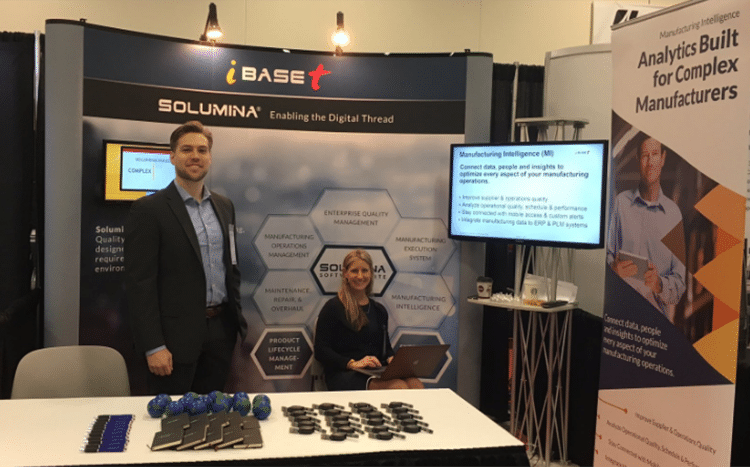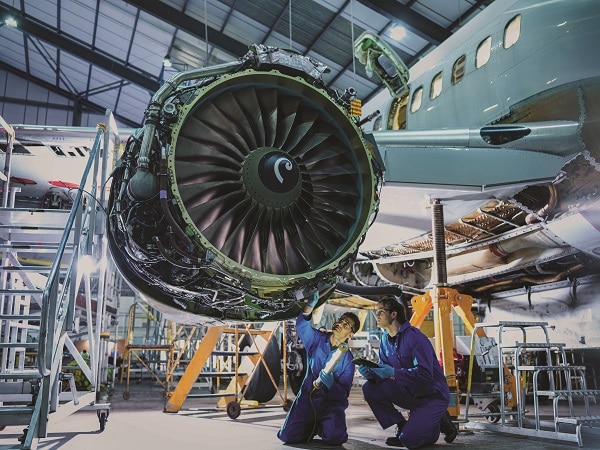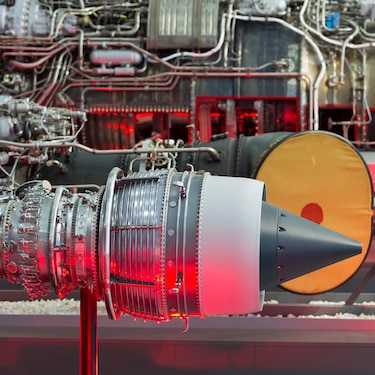It’s been just a few weeks since iBase-t returned from exhibiting at this year’s AeroDef Manufacturing Show. It is the annual SME-sponsored event that brings together leading companies and executives from the aerospace and defense industry as well as vendors that serve that critical sector—essentially anyone and everyone concerned with the technologies and trends driving the future of A&D manufacturing. The theme of this year’s gathering was “Collaboration for the Future of the Aerospace”; but on the show floor, much of the buzz concerned the industry’s journey to Smart Manufacturing or Industry 4.0.
“The idea is that all the technology is here, and we can string it together to create the next level of productivity, thanks to the connectivity we can achieve across equipment, people, and processes,” says Conrad Leiva, Vice President for Product Strategy and Alliance at iBase-t.
MESA defines Smart Manufacturing as the intelligent, real-time orchestration and optimization of business with physical and digital processes. According to Leiva, while there has been a lot of hype around the concept, increasingly there is real meat as well. Companies are not just talking about Smart Manufacturing, but rethinking their businesses as they move to leverage its potential for competitive advantage.
To realize this shift, companies will have to evolve their IT infrastructures to leverage connected things to business strategy. This means that the old tiers of siloed IT and OT will have to give way to a new structure in which everything is connected: departments, product/process lifecycle, internal resources, external resources, customers, and suppliers. “This means a complex IT infrastructure, with platform services, application services, and role-specific apps and bots,” notes Leiva. “This will lead to more fully automated tasks throughout the enterprise that demand pervasive connectivity. It also demands a cultural change. Companies must look at all their processes—who’s involved, what’s involved and how they are connected—but start with business processes, not technology.”
In a presentation at the show, Leiva offered a “to-do” list for companies starting the journey to Smart Manufacturing:
- Review business structure for future market strategy
- Establish evolution milestones for the journey
- Nurture new culture around the new vision
- Address the skills gap for knowledge workers
- Build partnerships to support the new vision
- Evolve the IT infrastructure
Completing the transition to Smart Manufacturing on a broad scale may take 10 to 20 years, but companies on the leading edge will get their faster, and seize market leadership in their sectors. You can see Leiva’s full presentation on Smart Manufacturing here.
Other Buzz
The conference’s three keynote addresses were very well attended, not a surprise given the topics addressed:
- Andreas Wüllner, chairman, business unit composites—fibers and materials at SGL Group spoke on “Where the Industry Is Going in Carbon and Why.”
- Alexander Eksir, vice president of Quality and Mission Success (Q&MS) at Lockheed Martin Aeronautics Company spoke on “Zero Defect Mentality at the Global Supply Chain Level.”
- Paul Marks, chairman and CEO of Argosy International, Inc. spoke on “China’s Aerospace Strategy and Its Implications for Western Aerospace.”
As always, current and emerging technologies were visible across the AeroDef show floor.

We will be exhibiting next at Manufacturing and Technology Conference and Expo in Cleveland, OH from May 8-10, 2017. Come visit our booth and/or book an appointment to meet with us!




